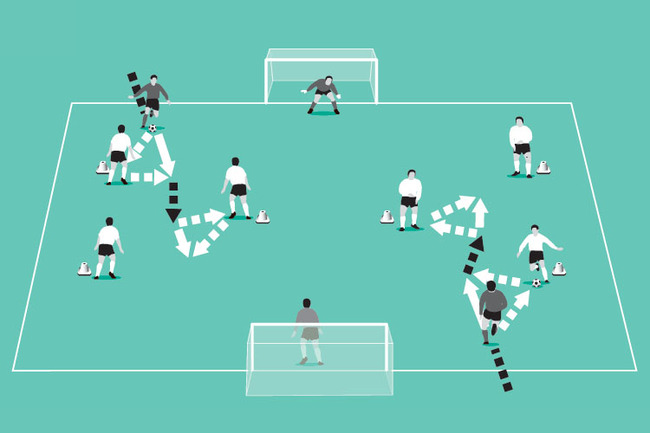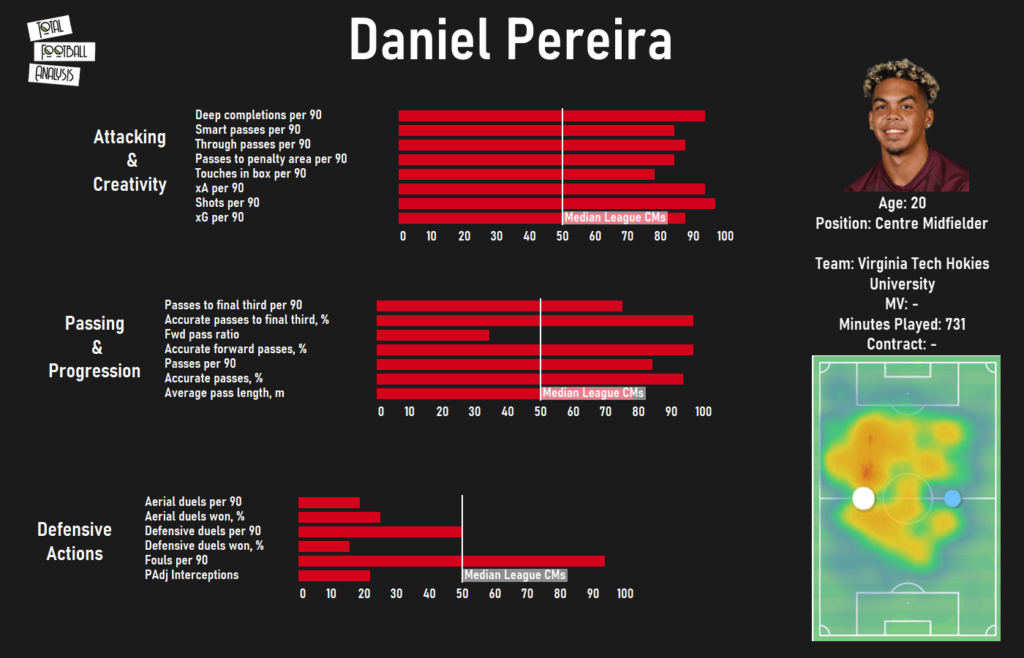Soccer isn’t just a sport, it’s a global phenomenon. From the electrifying energy of packed stadiums to the shared passion of fans across continents, soccer unites the world like no other. Record-breaking viewership for the 2022 World Cup stands as a testament to this undeniable truth. Soccer’s global reach has fueled a data revolution within the sport. Data analytics is rapidly transforming soccer, impacting teams, players, and organizations through increasingly data-driven decisions. With the 2024 Major League Soccer (MLS) season kicking off, let’s look at how data analytics in soccer is changing the game, one insightful analysis at a time.
The use of data analytics in soccer can be loosely broken down into several key areas of focus.
- Game planning: The meta analysis of games and matches to determine best play strategies
- Performance: The hard stats, from individual players to teams to full leagues
- Recruitment: Finding potential player and coaching talent
Game Planning
Game planning itself can cover a wide range of topics, including player match-ups and game strategy. Analysis in this field involves utilizing previous games and matches to determine strategies against a given team.

Image source: Soccer Coach Weekly
Opponent analysis is a tried and true method across all sports. This form of analysis can be very granular, looking at individual players in specific situations, such as penalty kick line-ups. It can also be high level, identifying overall trends and patterns in opponents’ play that can be exploited. The results of such analysis can drastically change how a team or player approaches a game.
With the advent of new technology being utilized for data analytics in soccer, opponent analysis and game planning are being brought to new levels of complexity. The combination of wearable tracking devices and modern camera technology has opened the floodgates of data collection, resulting in a smorgasbord of play-by-play positional data that analysts can use to inform game planning decisions. The real-time capabilities of image detection and computer vision also allows for coaches and staff to make in-the-moment decisions.
As technology continues advancing, avenues for game planning analysis include the utilization of virtual and augmented reality to coordinate, plan, and practice set-pieces and specific plays.
Performance
A major focus of data analytics in soccer is the collection and use of performance data to inform decisions. Front and center is the analysis of player performance to help develop and improve the individual player. Team performance is often analyzed as well, in conjunction with game planning and in the context of specific match-ups. Developing appropriate metrics to quantify performance is a vital part of this equation and is an ever-evolving field.

Image source: Science for Sport
Individual player performance—and the way it is measured—has drastically changed across the lifetime of soccer analytics. Metrics like expected goals now utilize predictive analytics to quantify a player’s near-future performance (in conjunction with secondary statistics that gather a holistic view of a player’s team contributions). Monitoring and evaluating player performance is essential for trainers and coaches in helping improve player strengths and weaknesses.
A major advancement has been the introduction of non-intrusive wearable devices that can monitor and collect a player’s vital responses. While there are privacy, consent, and data security concerns when it comes to wearables, they have amazing potential to not only help improve player performance on the field but more importantly, help players prevent (and recover) from serious injuries.
Predicting player and team performance utilizing machine learning algorithms continues to become more important, and has opened up a whole new avenue in data analytics in soccer when it comes to finding talent.
Recruitment
A vitally important part of a winning strategy is bringing together the right mix of talent across players and staff. Soccer organizations are putting a huge emphasis on academic-driven analytics, especially in regards to talent scouting. Currently, there are an extraordinary number of performance analysts working to aid recruitment efforts in the U.S. MLS. Sports journalist Ben Lyttleton sums it up nicely with the below quote, taken from his article on data and decisions in soccer:
”Today, the most important hire is no longer the 30-goal-a-season striker or an imposing brick wall of a defender. Instead, there’s an arms race for the person who identifies that talent.”

Image source: TFA
The Power of Moneyball and Soccernomics
Major shifts in sports analytics occurred following the publication of the books Moneyball in 2003 and Soccernomics in 2009.
Both books expose the power of data in finding undervalued players by highlighting undervalued metrics like niche playing tactics in soccer and on-base percentage in baseball. The end result? Smaller sports organizations can avoid overspending on flashy but less-impactful players and instead focus on acquiring hidden gems with specific skills at lower costs. By embracing data-driven strategies, smaller organizations gain a competitive edge against bigger spenders, proving that efficiency and smart player selection can trump financial muscle.
Predictive analytics has started to play a huge role in this process with organizations attempting to predict the performance of players, team compositions, and even coaches. Feature engineering is playing a pivotal role in advancing this field. How can we quantify the unquantifiable? For example, how can you measure a player’s relationship and attitude with his teammates and coaches? Something so subtle and nuanced has a huge effect on individual and team performance.
Summary
Soccer organizations are placing greater emphasis on utilizing data analytics in their management and recruitment decision-making processes. The inclusion of new technologies to advance the science of data collection allows analysts to capture the minutiae of player performance across many aspects of the game. There is a huge need for intuitive, creative-thinking data analysts within the realm of soccer (and sports as a whole), and their analyses will play a pivotal role in how the game of soccer continues to evolve and thrive.
Learn Data Science at Flatiron School
Flatiron’s Data Science Bootcamp can put you on the path to a career in the field in as little as 15 weeks. Download our syllabus to see what you can learn, or take a prep course for free. You can also schedule a 10-minute call with our admissions office to learn more about the school and its program.
Additional Reading
- Sports Illustrated: In Sports and Markets, Data Analytics is a Game Changer
- SoccerTAKE: Soccer Analytics: How Data is Changing the Game
- DataCamp: How Data Science is Changing Soccer
- The Athletic: Kevin De Bruyne and the Rise of Data and Analytics in Contract Negotiations




